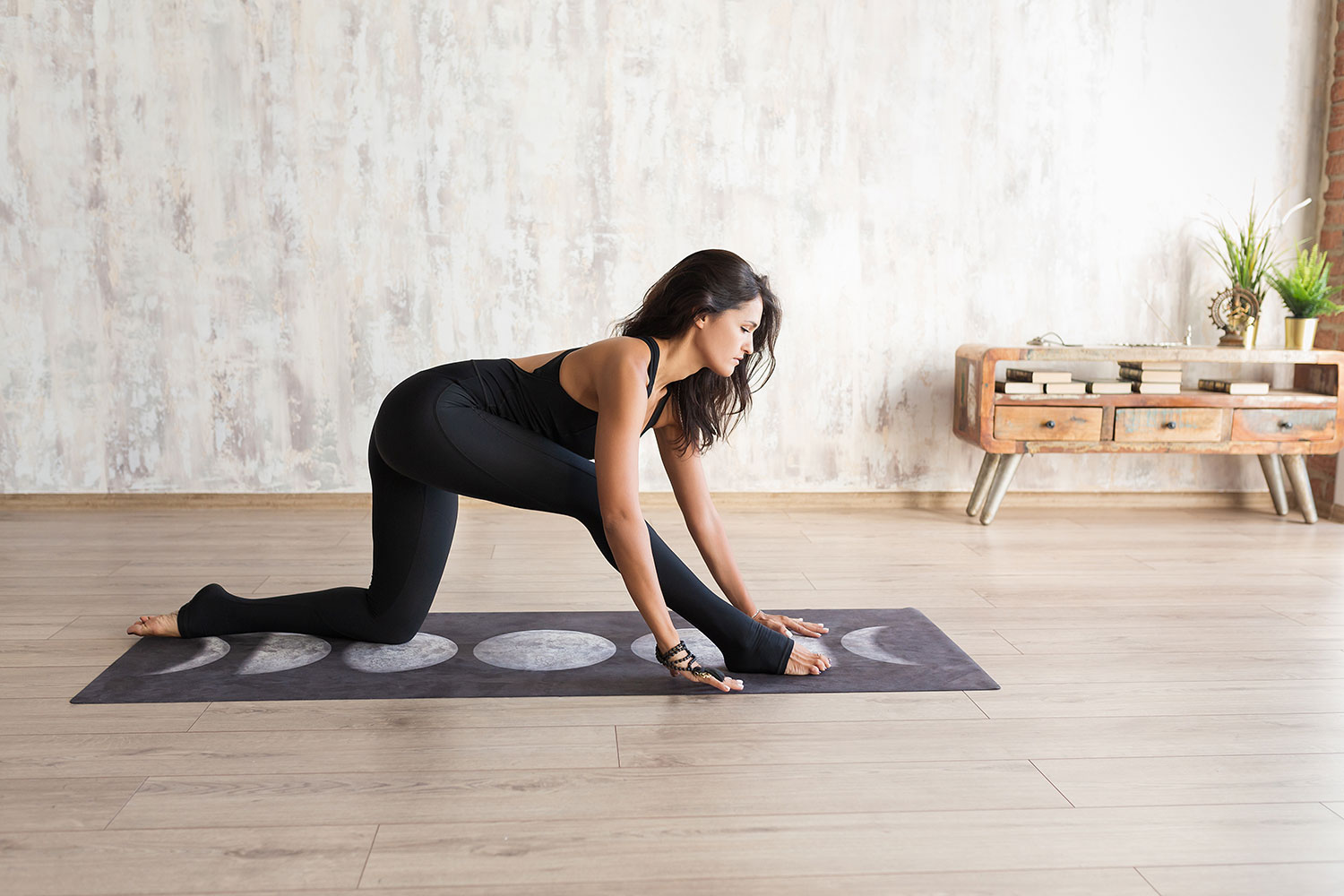
Yoga, meditation, and spirituality are at the top of the…
In the majority of the yoga classes you take, it is likely that the teachers will consistently cue the poses to start on the right side. Even as you go about your own home practice, you may find that you go into autopilot and start each pose on the right, without putting much thought into it. It is far more common to find teachers cueing this way for poses, and it easily becomes ingrained in our practice.
For some teachers, the explanation behind this method is incredibly simple: as they are going through a class, it can be easy to forget where the students are in the sequence. Consistently starting with the right side is a simple way to keep track of where they are in the flow, and ensures they don’t leave the students unbalanced at the end of class.
This explanation is practical, but the underlying reasons may be a little more complex than that. While there is not a straightforward answer that tells us why yoga poses typically begin on the right, there are a few traditional, spiritual, and physical explanations that can give us an insight into why modern yoga has evolved in this direction.
Balancing Masculine and Feminine Energies

One of the explanations has to do with the the energies that reside in our bodies. According to yogic tradition, our body contains over 72,000 nadis, which can literally be translated from Sanskrit to “stream”, “channel”, or “flow”. Nadis are energy channels through which prana flows, which is otherwise known as our life force. Through a yoga practice, we are releasing any blocks that exists in these channels, which in turn allows the prana to flow through freely.
Of the 72,000 nadis, there are three core energy channels. The Sushumna represents the center channel. The Ida nadi represents the left, feminine side. The Pingala nadi represents the right, masculine side. It is important to note that these masculine and feminine energies don’t relate solely to the male and female sex. Rather, they refer to the certain qualities that are found in nature and in our energetic bodies.
The Sushumna nadi runs from the base of your spine at your sacrum to the top of your head, where your Sahasrara chakra resides. In the Sahasrara chakra sits liberation for those who are enlightened, and the spiritual connection to all that exists. It is critical to keep the Sushumna energy channel clear of any obstructions, as it aids in spiritual growth and opens up this seventh chakra.
The Ida nadi relates to femininity, and is connected to the moon. It begins at the Muladhara chakra (also known as the root chakra), which is located at the base of the spine. This chakra helps you feel stable and grounded, helping you to feel both safe and secure when balanced. The Ida nadi continues up the entire left side of the body, ending at the head. This energy channel has a Yin energy, which is cooling and calming. It also has an emphasis on the creative side of our brains.
By contrast, the Pingala nadi relates to masculinity, and is connected to the sun. It starts at the Svadhisthana chakra, which is located above the pubic bone but below the navel. This chakra is associated with wellness, abundance, and pleasure. The Pingala nadi then travels along the right side of the body, ending at the head. This energy channel has a Yang energy, which complements the Yin energy in the Ida nadi with its heating and energizing effects. It stimulates the more analytical side of our brains.
In Sanskrit, Ha means “sun”, and Tha means “moon”, so in hatha yoga, we are balancing the two sides of our body, and allowing that masculine and feminine energy to flow freely through our bodies.
As we are practicing yoga, the reason for beginning on the right side as it relates to energy is rather practical. You start on the right side to stimulate the Pingala energy, which helps to heat you up and energize you in your practice. You then repeat that pose starting with the left side, and in turn stimulate the more cooling, relaxing Ida energy, which is a more appropriate way to end an asana or your practice. Stimulating both the right and left sides helps to balance these energies, and allows them to flow freely through the Sushumna nadi and your body.
Understanding the Indian Tradition of the Right Side

Another explanation for starting on the right side relates to the cultural significance of the right in Indian tradition. The right side is considered to be more pure and sacred. Traditionally, you give gifts, pass objects (such as money), or otherwise interact with people using your right hand. Historically, the left hand is reserved for cleaning purposes, so it is considered more appropriate to use your right hand when physically communicating with others. Furthermore, you only eat using your right hand, and use the left to clean yourself if necessary. When entering holy places, or a newly constructed building, it is considered auspicious to enter with the right foot. The right side is also representative of the east and the rising sun, so acting with the right side of the body is representative of asking for bliss, blessings, and grace.
While it hasn’t been explicitly confirmed that the cultural significance of the right is directly related to starting a yoga pose on that side, many practitioners believe that this may have had an influence on the practice of yoga, and points to why starting with the right side may be a more sacred practice.
Understanding The Anatomical & Physical Explanation

While tradition and energy flow can both explain why we practice our poses in the manner that we do, it is important to note the physical benefits that some of the poses reap from starting with the right.
In spinal twists like Supta Matsyendrasana (Reclining Spinal Twist) or Ardha Matsyendrasana (Half Lord of the Fishes Pose), your teacher may make note of the important of twisting to the right first. The twists in these poses have an impact on our motility, or the movement of our organs. They stimulate the internal organs, which in turn helps to keep things moving, digesting, and eliminating through your system.
By first twisting to the right, you massage the ascending colon, which is aligned along the right abdomen. By then repeating a twist on the left side, the descending colon, which is located in the left abdomen, is stimulated. Performing poses in this order helps to ensure that everything is moving through your body in the correct, counterclockwise direction. If you start on the left, you run the risk of developing constipation, particularly if you perform a deep twist or stay in the pose for an extended period of time.
You may have also noticed that teachers will often cue you to roll over to your right side after savasana. This is said to aid in the pranayama, which refers to a variety of yogic breathing techniques that can help with mental clarity, physical well-being, and relaxation. Rolling onto your right side allows for the most beneficial pranayama technique for the end of a practice. When you lay on your right side, your left nostril is more open, playing a more active role in bringing air into your lungs.
Returning to the concept of masculine and feminine energy, breathing through your left nostril activates the Ida nadi, which has a more calming effect. A more Western explanation is that it stimulates the parasympathetic nervous system. This system is responsible for sleep cycles, digestion, and elimination.
By contrast, if you were to roll onto your left side, your right nostril would be more open, stimulating the Pingala nadi, which wouldn’t be the most appropriate option after resting in savasana. Right nostril breathing stimulates the sympathetic nervous system, which is responsible for giving you an immediate burst of energy in a fight or flight situation. The relaxing breathing associated with the left nostril is best suited for the end of the practice, which is why teachers will recommend rolling onto your right side before pushing yourself up and out of savasana.
Another point to note is that by rolling onto your right side, your heart rests above your organs. This position helps you avoid putting any unnecessary pressure onto your heart. Since you are often working towards opening your heart during your session, rolling onto the left side could counteract some of the work you did in your asana practice.
We can’t pinpoint the exact reason why we tend to start yoga poses on the right side. Some teachers may choose to teach their classes this way simply because that is the way they were taught. If asked, others may offer up one of the explanations outlined above. Regardless, the history behind beginning on the right side is complex and somewhat mysterious, but has deep ties to both tradition and the spiritual practice of yoga.
What's Your Reaction?
Yoga, meditation, and spirituality are at the top of the list for writer and former nutritionist Amanda Carter. This devoted practitioner enjoys writing about health and wellness just as much as she enjoys living it.














